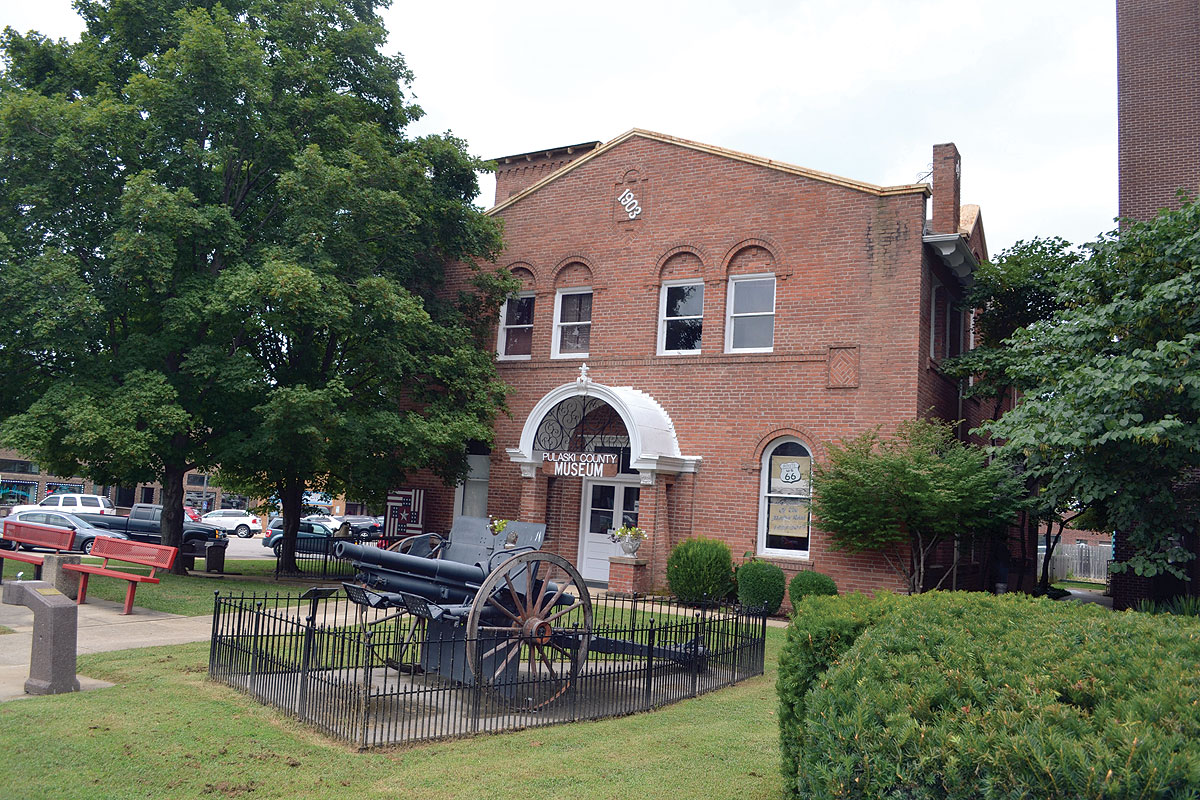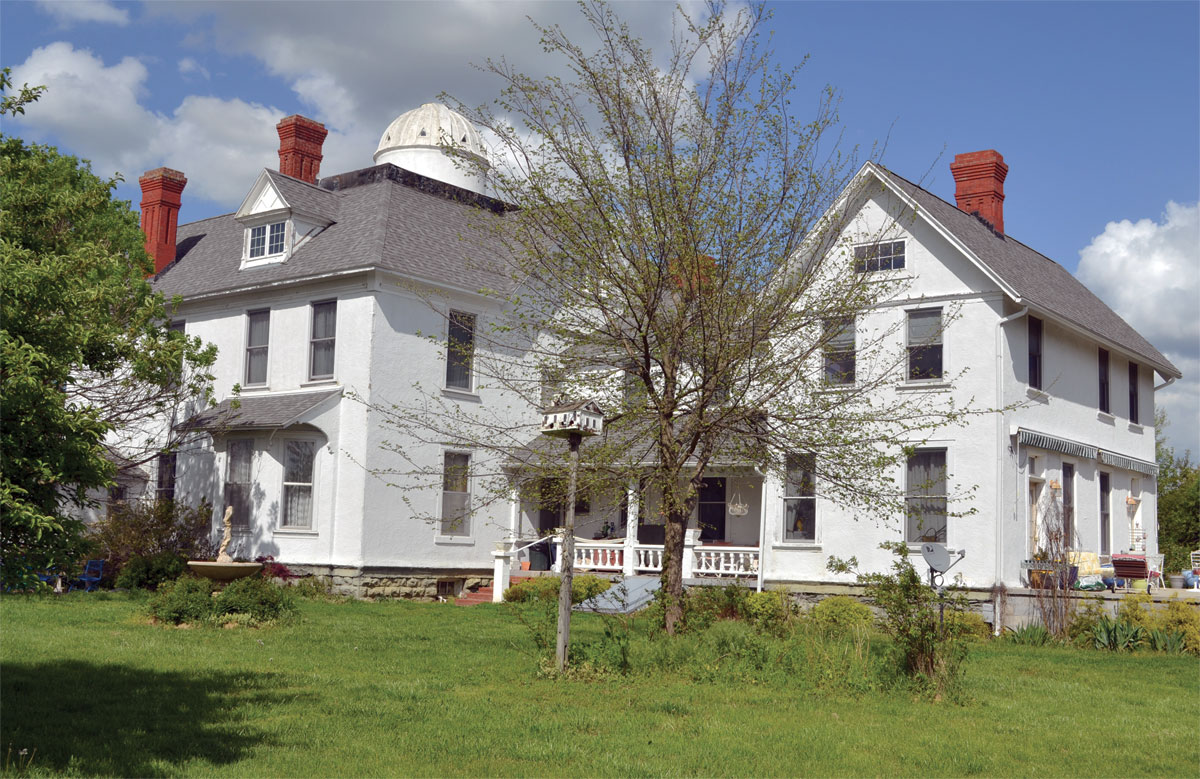
Duo works diligently to promote community history, as well new events and ideas
If every person’s story is worth the book, imagine what the story of a small town is worth. To date, the story of Marble City, Okla., is worth at least eight, large three-ring binders of old photographs and articles for sale by the local historical society. So far, more than 200 individual volumes or sets have been sold. The story also serves as an example of a deeply held belief that one person (although in this case two people) can make positive, significant, and long-lasting changes. The first person is Mildred Taylor, vice president of the Marble City Historical Society and one of the compilers of the historical volumes. Tamara Hibbard, mayor of Marble City, is the second. Even though both are quick to say many people have made significant contributions to their town, these two women have helped sculpt the current face of a mighty little place.

The history of Marble City is part of the history of the Cherokee Nation of Oklahoma. Before statehood, a limestone quarry and a marble quarry were the only significant businesses in the area. The marble quarry had an unofficial post office and was no more than a square hole in the ground. The town itself was established in 1903 when the Cherokee Nation land occupying that section of Oklahoma was repossessed by the federal government. One-square mile of land was developed into the future town of Marble City by businessmen Mildred call “speculators.”
Their belief was that the quarry would spawn a significant city of 15,000 to 20,000 people. The land was divided into lots and lottery tickets were sold. In September 1903 lots were drawn for ownership.

A jail was built in 1904 and, while abandoned, still stands today. Oral legend claimed Bonnie Parker, as in Bonnie and Clyde, was captured and put in the Marble jail overnight while on her way to Fort Smith, Ark. The next morning, she was gone. Everyone assumed Clyde rescued her. Mildred, however, has found nothing to prove (or disprove) the Bonnie and Clyde story. Another oral legend is that Charles “Pretty Boy” Floyd robbed the Citizens State Bank in Marble City. Floyd was only 12 years old when the bank permanently closed, so this story, while sounding exciting, has been factually debunked.

Using marble from the marble quarry, Citizens State Bank was built in 1911 and serves as the Marble City Historical Society home base today. That same year, the Marble City School, a two-story, gable roofed building was built, also using marble from the quarry. The top floor was removed in 1924 when the high school students were first bussed to Sallisaw School. The flat roofed building then served as a “primer” (kindergarten) through eighth-grade school. The building was converted to a gymnasium during the 1960s, but still visible are part of the original marble foundation and the original “stage” inside. Today the building serves as a food pantry and youth center.
By 1914, the original township of Marble City boasted two or three hotels, a gristmill, a sawmill, a livery stable and a dray wagon service, an old-fashioned UPS. The marble quarry did not develop as expected, and population declined. According to the Census Bureau in 1910, the population was 342 and went to its high of 344 in 1920. After the 1930 low of 168 during the Great Depression, the population varied between 200 and 300 to the 2020 level of 247. During Mildred’s era in the 1950s, the town boasted two restaurants, three grocery stores, a “beer joint” and a movie theater. For 10 cents, moviegoers would see a cartoon, a newsreel, the feature movie, and one chapter of a serial movie. Mildred remembers sitting in a packed theater for her very first movie experience of watching the Bride of Fu Manchu.
An important employer was, and still is, the St. Clair limestone mining operation, located just outside the city limits. During Mildred’s childhood, mining was done by pick, shovel and dynamite and has evolved through the years into a heavy equipment venture as part of the 18-location U.S. Lime-St. Clair corporate family publicly traded on the NYSE.
“Tamara is the heart of Marble City,” Mildred confided. “She organizes our events and keeps our community together.”
Although Tamara Hibbard has been part of the Marble City government for 16 years, she never planned on making mayorship part of her legacy. In early 2005, Tamara attended a city council meeting to request tree removal. The council explained they had no equipment but told her that elections were coming up and encouraged her to consider running. She hesitantly signed a Declaration of Candidacy with the intention of possibly withdrawing. Forgetting about signing it, she got a call two months later telling her she had ran unopposed and was elected by default. Luckily, Tamara took the position seriously and was eventually elected mayor by her council peers.

In addition to being the mayor, Tamara wears many hats for the small town. She is the current floodplain administrator, sewer superintendent, grant writer, and treasurer of the Marble City Festival Committee. The committee is comprised of representatives from all the non-profits, churches and volunteer organizations in town to plan events, fundraisers and to share labor resources.
Today’s Marble City currently contains no businesses but is comprised mostly of churches and non-profits, such as the Community Nutrition Center and volunteer fire department. The town receives no local tax revenue, other than internet sales.
“We have annual events such as Spring Fling, Summer Celebration on July 4, Fall Festival and the Christmas Parade,” Tamara said. “The biggest event, however, is a fundraising effort called Marble City Mayhem. The funds from that event pay the expenses for the other town events.
“Mayhem wouldn’t happen without the efforts of the townspeople and the festival committee. Marble is one big family and everyone comes together to help with events when needed. I may be the coordinator, but they are the backbone.”
Marble City Mayhem evolved when a dozen fancy cars, including a Viper, pulled into town; the Tulsa car club was lost.
Tamara asked what it would take to get them to return. They replied, “something fun.” She asked if an uphill speed challenge would bring them back, and they jumped at the chance.
The now-annual speed challenge attracts as many as 1,500 spectators and more than 100 competitors in 14 classes. Drivers must have valid license and insurance, and pay for each run up the hill. The runs are clocked by the police chief. The “Top Speeders” in each class win a custom trophy made with marble from the Marble City quarry. Though in different classes, once an old Chevy truck out-paced a Lamborghini. Food vendors, car show, T-shirts and free kid games are available. Similar fare is available at other annual events.
The Historical Society’s standing fundraiser is a monthly homemade to-go dinner, made by Mildred. Generally held the third Monday of the month, the meal comes with a choice of two entrees, two sides, hot rolls and a choice of dessert.
These women prove one can make a difference or two, or even more. Marble City and its story is only one piece in the patchwork quilt of the living history of our country.







